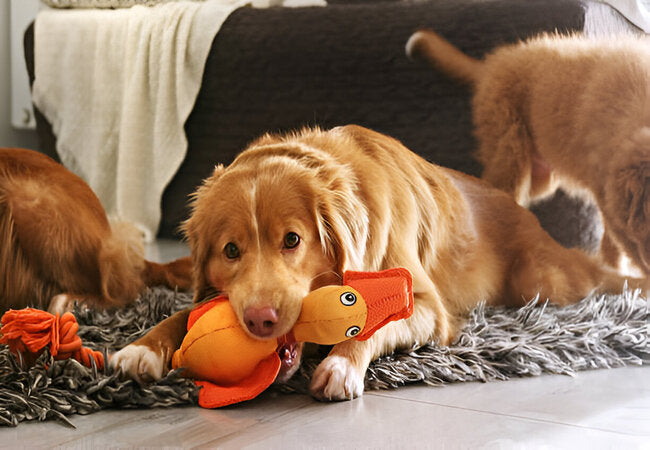2025 Vet Insight: Why Do Dogs Bring You Toys When You Get Home? 🐶🎁

In this article
2025 Vet Insight: Why Do Dogs Bring You Toys When You Come Home? 🐶🎁
By Dr. Duncan Houston BVSc
Hello! I’m Dr Duncan Houston BVSc, veterinarian and founder of Ask A Vet. When you walk through your front door and your dog greets you with a toy in their mouth, it's not random—it’s a thoughtful, instinct-driven message. This detailed 2025 insight explores the science, emotion, training benefits, and proper ways to respond.
1. A Joyful & Playful Greeting 🎾
According to PetMD’s recent feature, dogs bringing toys at the door often communicate high excitement and pure play invitation as soon as they reconnect with you.
Local reports confirm this greeting is unique and heartwarming—a signature ritual full of vibrancy and anticipation.
> “It’s her way of saying hello.” > “We call it resource showing. Like the opposite of resource guarding.”
2. Instinct & Affection-Driven Behavior
- Pack instincts: Dogs historically carried prey to share with their pack—presenting a toy is a modern echo of this instinct.
- A symbol of love: Sharing their favorite toy means “you’re special”—a sign of affection and trust.
3. Energy Redirect & Excitement Control
For over-excitable pups, carrying a toy helps redirect energy away from jumping or barking. Trainers and Reddit users alike praise this as a healthy alternative to unwanted behaviors.
4. Show & Tell: Attention-Seeking or Pride?
- Showing off: Some dogs display toys to get extra attention, without always wanting to relinquish them.
- Comfort offering: For anxious dogs, a toy can act as a transitional comforting object during a social greeting.
5. Dogs Recognize Toy Names Too 🎯
Studies reveal dogs can match spoken toy names with the objects—meaning some toy offerings are purposeful and tied to understanding.
6. How to Respond Mindfully
- Observe motivation: Are they asking to play, share, or soothe energy?
- Validate the gesture: Acknowledge with calm praise and gentle pats.
- Engage in play: If they want interaction, follow with a quick fetch or tug.
- Redirect energy: Use cue words like “sit” combined with a toy exchange if excitement increases.
- Respect boundaries: If politeness or calm is the end goal, appreciate the offering and then transition to downtime.
7. Training with Toy-Greeting
- Teach a cue: “Bring it” can shape controlled exchange behavior.
- Trade technique: Swap a toy for a treat or reward to encourage polite offering.
- Consistency matters: Always reinforce polite manners whether greeting with a toy or without.
8. Watch for Misinterpreted Signaling
In rare cases with possessive dogs, toy offering may mask resource guarding behavior. Look for stiff body language or guarding growls. Seek behavior support via Ask A Vet if in doubt.
9. FAQs on Toy Greetings ❓
- Q: Is this toy greeting always good?
- Generally, yes—it fosters bond and energy regulation. But on rare occasions, you may need behavior adjustment.
- Q: Should I train them when to greet with toys?
- Yes—positive reinforcement for calm greetings ensures it’s used when helpful, not compulsive.
- Q: What if my dog guards toys?
- Never force the issue. Consult Ask A Vet for tailored behavior plans.
10. Ask A Vet Support & Tools 🛠️
In the Ask A Vet app, you can:
- 📹 Share greeting videos for expert decoding of motivation and cues
- 🔄 Receive training protocols for polite toy greeting and exchange
- 🧠 Access calm-down routines and enrichment toolkits
- 📈 Track greeting behavior over time and get feedback
🩺 Final Vet Reflection
When your dog brings you a toy at the door, they’re offering connection, affection, or excitement in their canine way. Recognizing the underlying message and responding with awareness enriches your bond and helps shape healthy greeting habits. If anything seems off—like resource guarding or anxiety—Ask A Vet is here to support you and your pup. 🐾❤️






